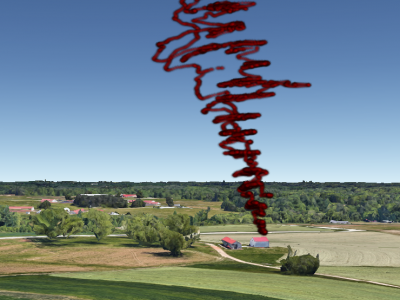Wireless Networking
A new approach addressing the spectrum scarcity challenge in 6G networks by implementing an enhanced licensed shared access (LSA) framework is considered. The proposed mechanism aims to ensure fairness in spectrum allocation to mobile network operators (MNOs) through a novel weighted auction called the fair Vickery-Clarke-Groves (FVCG) mechanism in which the determination of weights is based on the results of the previous auctions.
- Categories:
 352 Views
352 Views
Smart home automation is part of the Internet of Things that enables house remote control via the use of smart devices, sensors, and actuators. Despite its convenience, vulnerabilities in smart home devices provide attackers with an opportunity to break into the smart home infrastructure without permission. In fact, millions of Z-Wave smart home legacy devices are vulnerable to wireless injection attacks due to the lack of encryption support and the lack of firmware updates.
- Categories:
 247 Views
247 Views
The dataset includes the coordinates of a 2980 antenna array.
- Categories:
 24 Views
24 ViewsIn this dataset, we conducted a spectrum monitoring experiment in an urban environment. The helikite flies up to an altitude of 400 feet throughout the day from noon to 9 p.m. during NC State’s Packapalooza festival in August, 2022. The spectrum is swept up to 6 GHz. Every sweep takes around 1 minute, while after every 4 measurements, the 5th measurement takes close to 5 minutes due to another data collection activity running in parallel. The photo of a flying Helikite at the experiment site is shown in the dataset image.
- Categories:
 356 Views
356 ViewsIn this dataset, we conduct the spectrum monitoring experiment in AERPAW Lake Wheeler site, which can be classified as a rural area. The helikite flies up to an altitude of 500 feet at increments of 10 meters, while waiting for 5 minutes in between altitude changes. The spectrum is monitored up to 6~GHz. The trajectory of the helikite mapped on top of the experiment site during the flight is in the dataset image. Small random variations in altitude due to wind can also be observed.
- Categories:
 180 Views
180 Views
ImgFi converts wifi channel state information into images, improving feature extraction and achieving 99.5% accuracy in human activity recognition using only three layers of convolution. In addition to the self-test dataset, three publicly available high-quality datasets, WiAR, SAR and Widar3.0, are used. WiAR collects 16 activity-reflected WiFi signals; SAR collects WiFi signals in response to 6 actions performed by 9 volunteers over 6 days, while Widar3.0 collects 6 action signals from 5 volunteers at different locations and antenna orientations.
- Categories:
 2045 Views
2045 Views
AirForce Security Dataset (AFSD) that offers many advantages over the AWID dataset for detecting Evil Twin attacks. The AFSD dataset was created through a carefully planned and executed simulation of an Evil Twin attack considering the characteristics of both the attacks and the WiFi environment.
- Categories:
 512 Views
512 ViewsIoT has a significant role in smart campus. LoRaWAN is an emerging technology that enables serving hundreds of IoT devices. In this dataset, we present a the data results from the LoRa communication model between the devices and the gateway and between the gateway and the processing server. In addition, we present the physical readings sensed by the LoRa devices. This dataset is very rich and can be used in many applications, such as time-series forecasting, number of people prediction, and veryfing spatial correlation algorithms.
- Categories:
 957 Views
957 Views


